Grasslands are full of bison, prairie dogs, and–you guessed it–grass! Learn all about this amazing biome with these fun facts about grasslands.
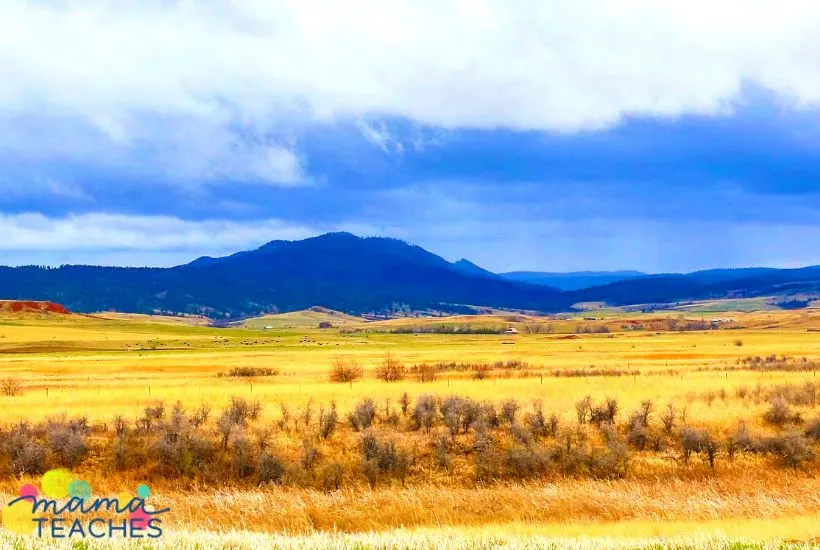
Basic Facts About Grasslands
Grasslands are one of the main biomes of the Earth.
They cover around 30% of the Earth’s land.
You will find the grassland biome on every continent except Antarctica.
There are two types of grasslands: prairies and savannas.
Now that you know some basic facts about grasslands, let’s move on to some fun facts about grasslands.
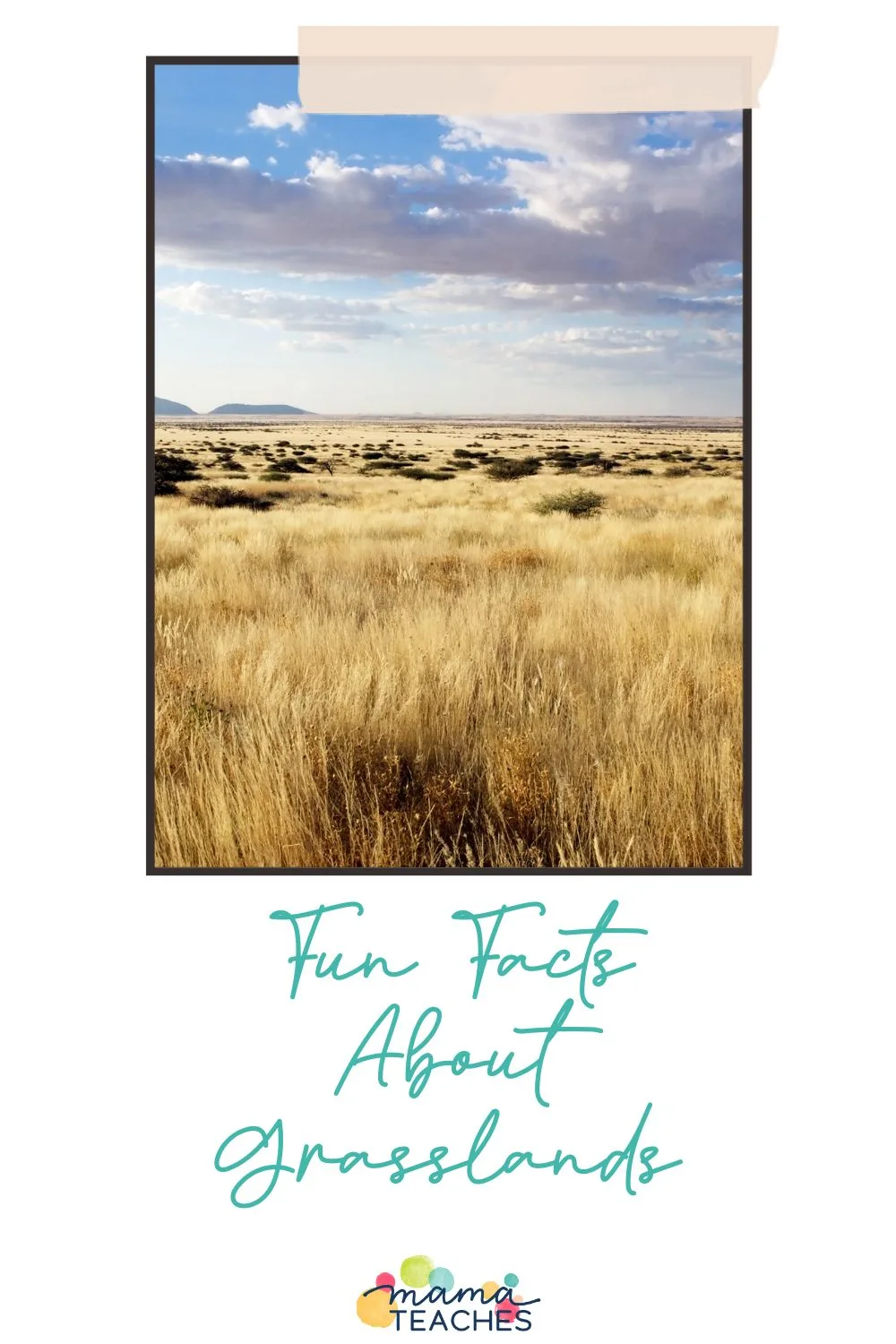
This article contains affiliate links to things that you might like.
Fun Facts About Grasslands
These fun facts about grasslands will help you learn more about this incredible biome.
The Difference Between a Prairie and a Savanna Has Nothing to Do with Grass
Prairies and savannas are alike in that they don’t receive much rain (they get more than a desert but less than a forest).
But savannas are tropical grasslands that have a few short trees. (You can read more about savannas here.)
Prairies are extensive, flat, temperate grasslands that have few, if any, trees.
Savannas are warm all year round, but prairies have a cold season.
Prairies Have Different Names
A prairie is a temperate grassland that experiences a cold season and has few trees.
The term “prairie” typically refers to the grasslands of North America.
If you say “pampas,” you are likely referring to the temperate grasslands of South America.
The term “steppes” is what the temperate grasslands are called in Europe and Asia.
There are subtle differences between the three. Prairies have longer grasses than steppes.
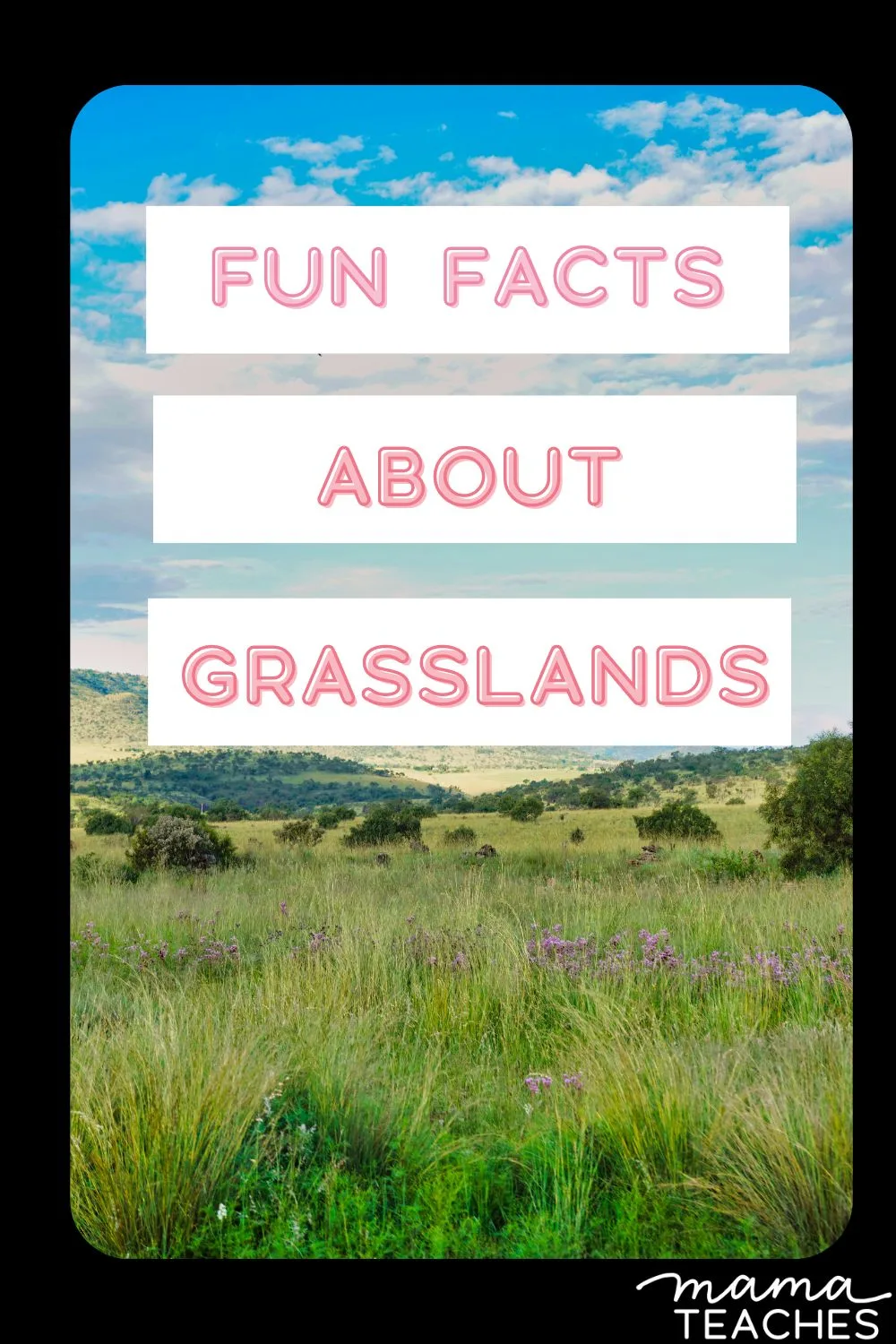
Prairies Are Disappearing
Two hundred years ago, much of the midwest of North America was vast, open prairie.
The Great Plains run through Kansas, North Dakota, South Dakota, Montana, Nebraska, Kansas, Oklahoma, Texas, Wyoming, Colorado, and New Mexico.
They also extend into Manitoba, Alberta, and Saskatchewan Canadian provinces.
Indigenous people hunted the wandering herds of bison, pronghorn antelope, deer, and elk.
But as settlers moved west, they claimed the fertile grassland and converted it to farmland.
Now, much of the prairie grows grasses for human consumption: corn, wheat, and oats.
Wild prairies have primarily been converted to farms.
You can still visit the wild prairie if you travel to the American Prairie Reserve in Montana. It is 455,000 acres.
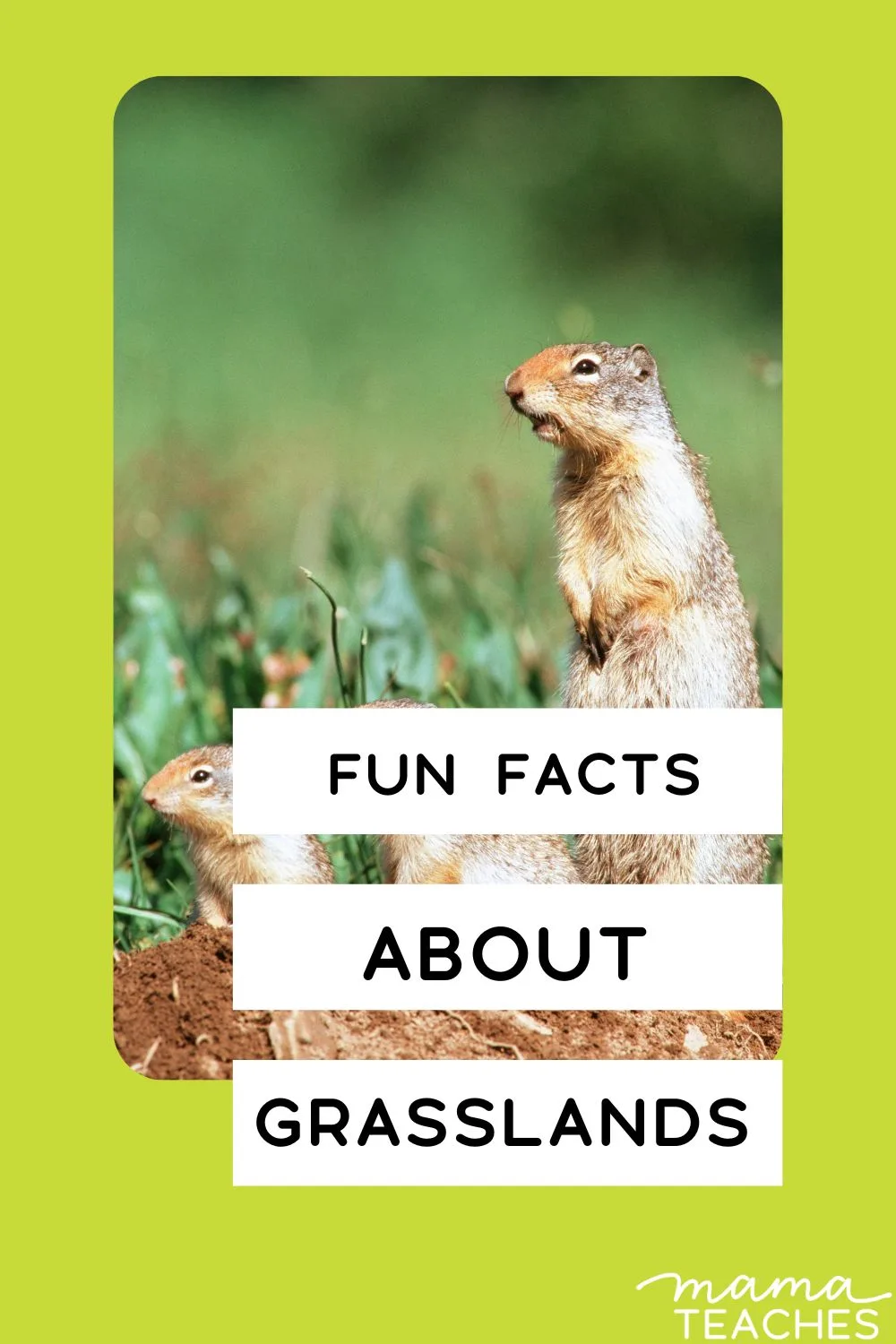
Prairie Dogs Support Over 136 Species
Prairie dogs are the squirrels of the prairie (in fact, they are related to the squirrel).
They burrow tunnels in the ground.
Those tunnels provide homes for other prairie animals like jackrabbits, rattlesnakes, and toads.
Prairie dogs are also a vital food source for hawks, coyotes, and ferrets.
The Pampas of Argentina Are Home to the Geoffroy’s Cat
The grasslands of South America, called the pampas, are located mainly in Argentina.
They are home to the Geoffroy’s cat, a wild cat that looks much like your sweet and cuddly house cat.
Do not be fooled! Geoffroy’s cats are wild and have never been successfully kept as pets.
They even look like mini cheetahs with their orangish-tan fur and black spots.
Geoffroy’s cats eat mainly rodents and birds from the pampas.
They hunt primarily on the ground, but they can climb trees as well.
Unlike your housecat, they are also excellent swimmers.
Locals sometimes call these cats “fishing cats” because they will hunt in the water for frogs and fish.
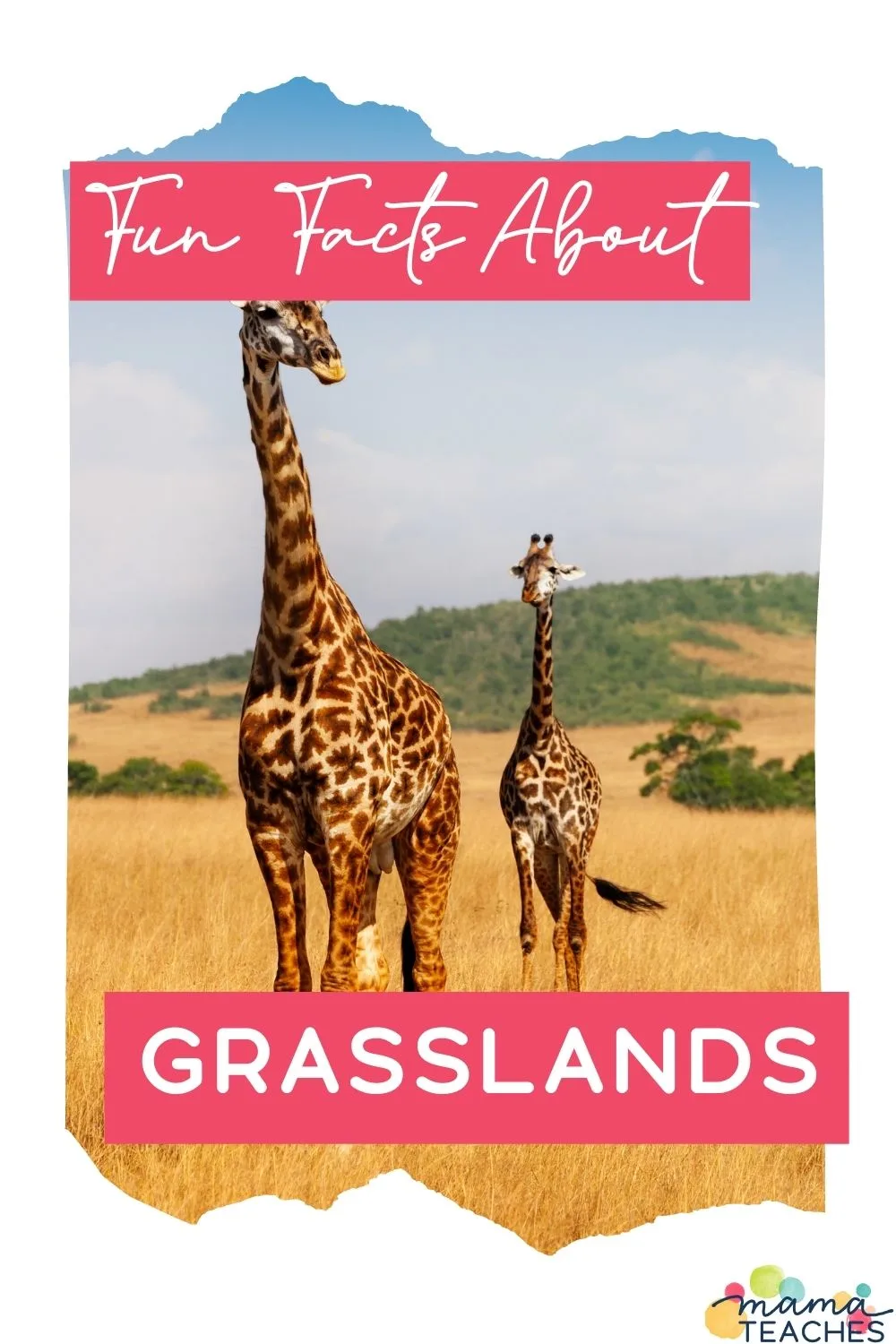
The Gauchos Are the Cowboys of the Pampas
The cattle of Argentina graze on the pampas.
And who are the cowboys who tend these herds? The famous gauchos!
Just as the people of North America remember the cowboys of the Old West, Argentina fondly remembers their heroes of the past: the gauchos.
The gauchos wore baggy pants, fabric ponchos, and a unique cap called a Boina.
Today’s gauchos still care for the cattle of the pampas, but they are as likely to ride a four-wheeler on the pampas as go on horseback.
The Famous Silk Road Stretched Across the Grassland
For more than 1500 years, the famous Silk Road connected China with the West.
Travelers, missionaries, and merchants would travel the road to go to and fro between China, India, and Europe.
The Silk Road was built along the steppe, Eurasia’s grassland.

There Are No Steps in the Steppes
When we hear the word “steppes,” we picture stairs.
But the steppes of Eurasia are not tiered like a staircase.
They are flat.
In fact, the name “steppe” means precisely that. It is the Russian word for “flat, grassy plain.”
The Only Wild Horses Live in the Steppes
Przewalski’s horses are truly wild.
By contrast, the wild horses of North America and Australia come from domestic horses that turned loose.
Przewalski’s horses are short and stocky. They have brown fur and a spiky mane like a zebra.
The last wild herd of Przewalski’s horses were found on the steppes of Mongolia.
Since then, groups of Przewalski’s horses have been reintroduced into the wild in Mongolia, China, and Kazakhstan.
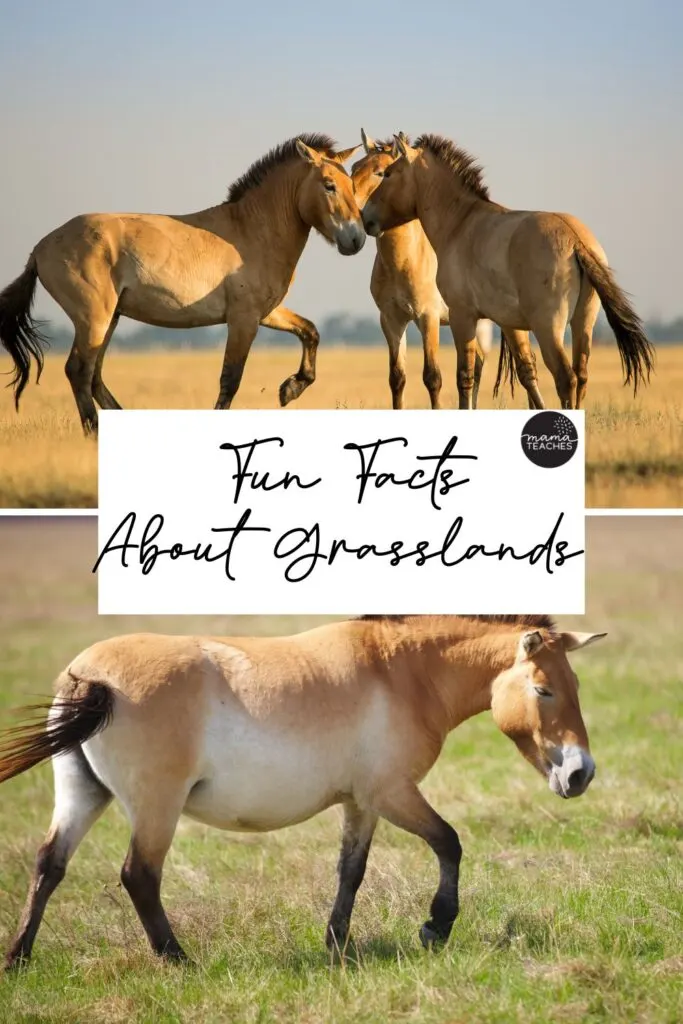
Fun Facts About Grasslands
The temperate grasslands (prairies, pampas, and steppes) are fascinating.
This important biome is incredibly fertile and provides food for humans and animals alike.
Get to know more about this biome with these fun facts about grasslands.
You May Also Like:
